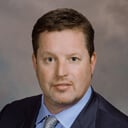Hit your head and seeing stars? Physical therapy can help!
Posted on 1/22/2021
While sports might continue to look a little differently this year due to the COVID-19 pandemic, the safety for our athletes remains a top priority. Our athletic trainers and physical therapists provide crucial education for the protection of our athletes while they are participating in their long-awaited sports seasons, as well as provide comprehensive therapy to aid in the recovery of any injuries sustained.
One of the most prominent, but often less understood, sports injuries is the concussion. There are many myths and misconceptions about concussions, but they can occur from any impact to the head, neck or body. A concussion starts with a physical impact and can be a direct hit to the head or an indirect hit, such as the rebound of the head/neck in a football tackle. The obvious hits are the easiest to recognize; however, the less obvious hits are harder to catch and may lead to missed symptoms.
While not all hits lead to a concussion, it is important that we are on the lookout concussion symptoms. Parents, coaches and teammates should be educated on common symptoms in order to prevent the athlete from playing through injury. Symptoms can include:
- Headache
- Dizziness
- Fatigue
- Feeling foggy
- Difficulty thinking
- Imbalance
- Sensitivity to light or sound
- Blurred or double vision
The presentation of these symptoms may start showing immediately or be delayed up to 24 hours.
It is also important that a thorough assessment be performed to rule out that an injury has not occurred before returning to play. Playing through a possible concussion or missing concussion symptoms overall is a safety concern and could delay return to sport. Always think, “When in doubt, sit them out.” This assures the athlete rests initially for 24-48 hours to allow the body and brain to rest and heal.
During this resting period, to the athlete should avoid mental and visual strain as well as excessive activity. This includes anything that increases your symptoms, such as watching television, playing video games and being on the computer and/or phone.
Most concussions will resolve themselves within 7-10 days, but approximately 15-20% of patients present with lasting symptoms – most notably headaches – which may be the result of delayed healing. Initially, resting the brain helps decrease prolonged symptoms and extended healing times. After the initial resting phase, best practice is to begin an active recovery. Physical therapy intervention can set athletes up with an appropriate exertion program that is safe for the brain.
Our centers offer a variety of opportunities to work with therapists specializing in concussion rehabilitation who help to establish the underlying cause of prolonged symptoms. Each comprehensive examination focuses on the most common factors that may lead to delayed healing, including physiologic recovery (Is your brain healed enough to tolerate activity) and visual and vestibular involvement (Are your eyes or inner ears playing a role in your symptoms? Is the neck involved?).
Our evaluation and treatments are backed by evidence that will help patients recover more quickly in order to safely return to symptom-free participation in their respective sports.

